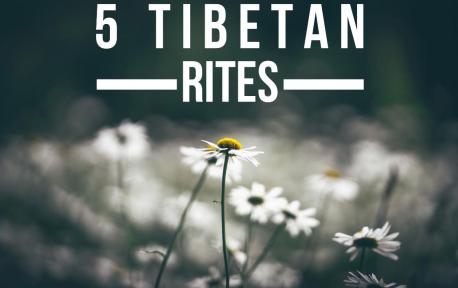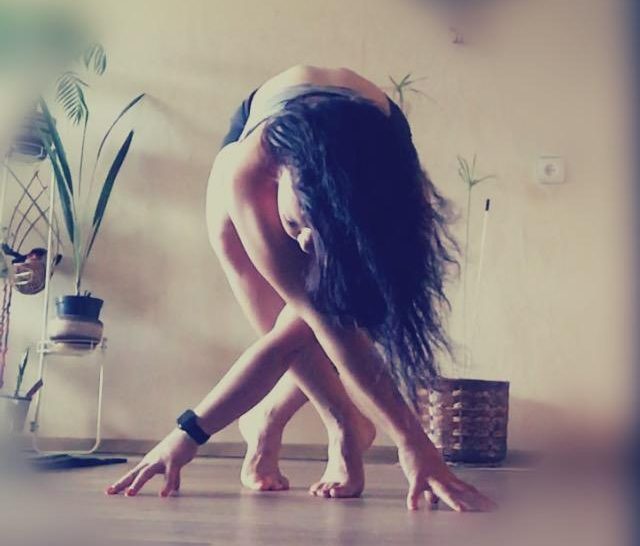
5 Tibetan Rites is a series of exercises that I learnt while doing my Yoga teacher training. I practiced them for a few weeks and felt great. Then I stopped and moved on to something else.. as you do..
Two weeks ago one of my class participants mentioned the Rites and said she had been doing them for a couple of days and never felt better. And I thought I’d share the practice with you.
The Five Tibetan Rites is a system of exercises that dates back to more than 2,500 years old. They were first mentioned in a publication called The Eye of Revelation by Peter Kelder in 1939.
The Five Rites is a form of Tibetan yoga, which is similar to the Indian yoga practice. The difference between the two is that traditional Tibetan Yoga style as well as the Five Rites is more of a flow or Vinyasa style, with movements flowing rather than being held as “static positions” traditionally practiced in India.
It is said that they aid in improving health and support emotional well-being as well as enhancing mental clarity, memory and balancing hormones.
So how exactly does it work and why are these exercises so good for you?
I’d like to ask you to read this with an open mind and if you do believe in chakras then you should be quite comfortable with the terminology. If you are on the fence or a non believer then just refer to them as energy centres.
‘The rites stimulate the energy system of the body, wake up the chakras, and get energy moving throughout every cell in your body. The lamas believe that the Five Tibetan Rites stimulate all seven chakras to spin rapidly at the same rate. They believe that the aging process can be defined by the level of activity in one or all of the chakras. If any one of the chakras is blocked and its natural spin rate is slowed, then vital life energy cannot circulate, and illness and aging set in.’
The 5 Rites should be performed as a sequence and you should start with 3 repetitions of each exercise in the first week and then add 2 more per week up until you manage to do 21 repetitions of each rite (21 is considered to be a sacred number to Tibetans)
They should preferably be performed in the morning on an empty stomach.
You can watch a video on how to perform the movements or read the description below.
You can access the video by clicking here.
This is a description taken from one of the blogs online (the link to the article is just below the description)

Rite 1
Stand with your arms outstretched and horizontal to the floor, palms facing down. Make sure your arms are in line with your shoulders. Your feet should be about hip distance apart. Draw the crown of your head up toward the ceiling. Focus on a spot in front of you so that you can count your rotations. Spin around clockwise until you become a little dizzy. Gradually increase the number of spins from three to 21.
Breathing: Inhale and exhale deeply as you spin.
Tip: If you feel super dizzy, interlace your fingers at your heart and stare at your thumbs. Also have a chair very nearby to grab onto to steady yourself if you feel as if you are going to fall.
This movement is known to release negative energy and balance the emotions.
Rite 2
Lie flat on the floor. Fully extend your arms along your sides and place the palms of your hands against the floor. If you have lower back issues, place your fingers underneath your sacrum. As you inhale, raise your head off the floor, tucking your chin into your chest. Simultaneously lift your legs, knees straight, into a vertical position. If possible, extend your legs over your body toward your head. Then slowly exhale, lowering your legs and head to the floor, keeping your knees straight and your big toes together.
Breathing: breathe in deeply as you lift your head and legs, and exhale as you lower them.The second rite strengthens the abs and stimulates the energy center associated with the pancreas.
Rite 3
Kneel on the floor with your toes curled under. Place your hands on the backs of your thigh muscles. Tuck your chin in toward your chest. Slide your hands down the backs of your thighs as you draw your shoulders back and your head up toward the sky. Keep in mind that you are arching your upper back more than your lower back. Move your head back as if you were drawing a line with your nose on the ceiling. Slowly return to an upright position and repeat.
Breathing: Inhale as you arch your spine and exhale as you return to an erect position.This exercise opens the solar plexus, heart and throat. It also helps cleanse and balance the emotions.
Rite 4
Sit down on the floor with your legs straight out in front of you and your feet about 12 inches apart. Place your palms on the floor alongside your sitz bones. As you gently drop your head back, raise your torso so that your knees bend while your arms remain straight. You are basically in a table-top position. Slowly return to your original sitting position. Rest for a few seconds before repeating this rite.
Breathing: Breathe in as you rise up into the pose, hold your breath as you tense your muscles, and breathe out fully as you come down.This pose increases energy to the sacral region and is a gentle way to strengthen the thighs and glutes.
Rite 5
Lie down on your belly with your palms face down and in line with your bra strap. Press up into an upward-facing dog by curling your toes under, lifting your heart, and drawing your shoulders back. Your arms should be straight. Look straight ahead of you, or if you are a little more flexible, gently draw your head back, taking your eyes toward the sky. Then draw your hips up and back, extending your spine, into downward-facing dog pose. Repeat by moving back and forth between downward- and upward-facing dog.
Breathing: Breathe in as your rise up into upward-facing dog; breath out as you push back into downward-facing dog. This is the most vigorous of all the rites and is a great way to revitalize the energy centers in the body (https://www.google.co.uk/amp/www.sheknows.com/health-and-wellness/articles/1022837/anti-aging-yoga-poses-the-5-tibetan-rites/amp)
I have also found a very good article on the rites, its benefits and feedback from people practicing it. Click here to access it.
Give it a go and see what you think about it! It does not take a lot of time and you do not need a lot of space to perform the rites either.
Have fun with the practice and let me know how you are getting on!
Love & hugs,
Natallia
—————————————————————————————————————————
Bibliography:
- http://www.mkprojects.com/pf_TibetanRites.htm
- http://www.t5t.com/pages/What-Are-The-Five-Tibetan-Rites
- https://en.m.wikipedia.org/wiki/Five_Tibetan_Rites
- https://www.google.co.uk/amp/www.sheknows.com/health-and-wellness/articles/1022837/anti-aging-yoga-poses-the-5-tibetan-rites/amp)
- wordswords.com.au/…/26282930-Tibetan-Rites-131.indd_.pdf

